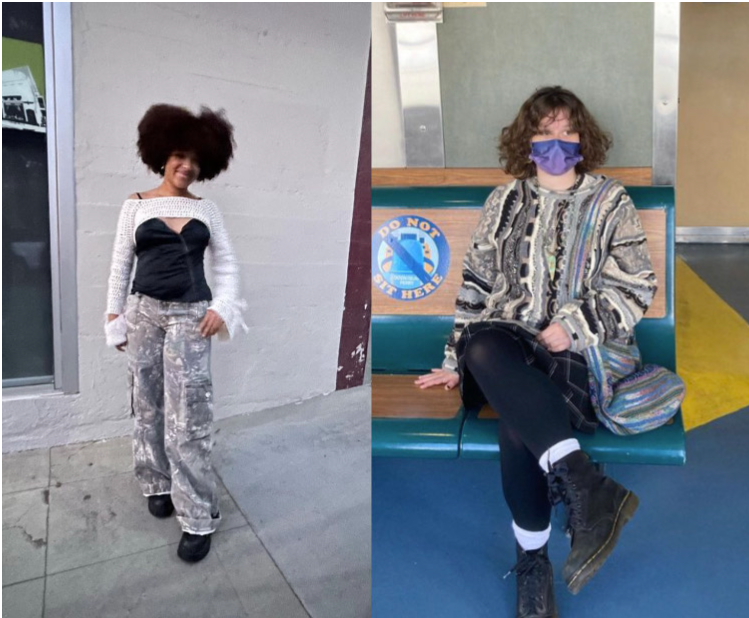Written By: Patrick Novak, Staff Writer
FASHION: Fashion trends speak volumes about high school students’ individuality within the school community.
The fashion at Poly is remarkably unique. People dress in interesting and intriguing ways, presenting a question regarding how these trends start and spread throughout high school. Notably, members of Poly’s FIDM Fashion provide substantial insight into this situation.
Zoe Harris (12) became the president of Fashion Club out of a desire to keep people connected in a way that could provide safety and spur positivity. Harris emphasized that “in High School, everyone is still trying to find themselves so I notice a lot of people will blend in;” however, “many people express themselves through fashion and bend the standard, standing out more in the hallways” According to Harris, the “different elements of colors, patterns, and cuts” dependent on “each individual person,” was something she found infinitely intriguing about the way other people dress.
Fashion Club member Shannon Soto (12) describes her fashion sense as eclectic and silly; Poly had a key role in the way she has developed as a person, including the way she expresses herself via fashion. Her experience with attempting to fit in as a young high schooler is relatable to many young teenagers: “I was a completely different person at the beginning of my freshman year,” Soto claims, and “I was constantly thinking about how other people saw me because of my experiences in middle school and refused to let myself stand out in any way.” It appears that a fear of what others think can impact fashion and individual expression on a mass scale, such as in high school, potentially tying into the anxieties of incoming freshmen and those not yet comfortable within Poly’s setting. However, quarantine had a significant impact on Soto’s fashion sense: “As awkward as it was, my experience during quarantine allowed me to relearn how fun it can be to wear literally anything and not worry about what other people thought.” Soto recounted, “I’m sure some people made fun of me; my outfits were pretty bad at times.” However, reflecting on her previous experience, Soto admits that “the only thing that matters is that I was happy with myself. Nowadays I have the same attitude towards life and I really do have Poly to thank for that.” The impact that both quarantine and Poly maintain on Soto (and likely other students) is very prominent. She exemplifies the impact of 2020’s prolonged state of isolation and quarantine and the self-confidence it actually brought with the removal of direct social anxiety. Soto’s expressive fashion sense, potentially similar to the rest of many Poly students, developed in spite of social pressure.
Despite some uniqueness in fashion, however, Harris emphasizes how technology, maintains an influential role in the increasingly rapid change in trends on high school campuses and continues to contrarily affect the way high schoolers dress. Having a spotlight on ‘proper’ or popular fashion 24/7 online can easily make the pressure of conformity more prominent in everyday life. Harris notices “people switching up their styles and key styles constantly.” This type of exposure to different kinds of styles “doesn’t allow people to develop their own styles because of the pressure to keep on trend.”
Harris and Soto are both proof that it is possible and rewarding to be happy being yourself in the world of fashion despite the social pressures of online activity and high school. Despite the pressure to fit in, being yourself is very rewarding, and as a school and society we need to maintain a support system, similar to what Zoe Harris wants to accomplish with Fashion Club, that encourages this positivity within one another and the way we present ourselves. Fashion should be used to keep us together, allowing us to express ourselves rather than reducing us to only following trends.

